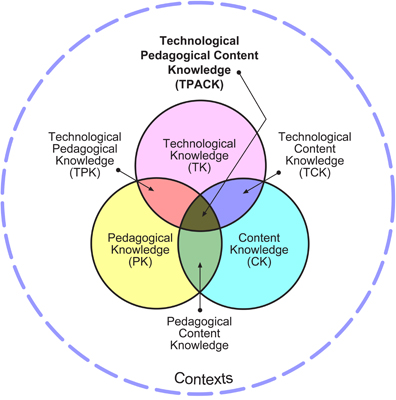TPACK Model
TPACK is one of the technology models available to educators in their quest to learn how to use a framework to evaluate and balance skills and knowledge for technology integration in the context of their current ability to use content and pedagogy as interrelated elements of instruction. The strength of the TPACK model resides in the fact that it looks at the complexities of teaching from the perspective of content, pedagogy, technology, and the intersections of each one as part of the instructional process. It is in the practice and application of these interrelations that technology cannot be integrated as an add on or a with a one size fits all approach.
Recommendations
Revolution in
education continues to be the work and the task of human beings, not the work of
technology tools that are randomly used to plan and deliver instruction. The
TPACK model teaches us that revolution in education occurs when we skillfully
look and balance the cognitive process and interactions occurring between what
we know and want our students to know, how we want our students to know it, and
how technology can support and transform the learning process.
The TPACK model
should not be promoted in education circles as a model to learn and follow but
rather as a framework that helps teachers visualize and intrinsically balance the
elements of instruction that come into play when designing and providing digital learning
experiences for students. Technology
should be looked upon with critical eyes and an open mind when finding its
practical application to specific content areas. The existing literature
regarding TPACK suggests that we are on a discovery process for content and
pedagogy transformation processes as new technologies change and determine how
different subject areas are constantly being redefined and reinvented by the
use of 21st Century digital resources.
It is imperative
that educators continue to focus on mastery of learning objectives and the
creation of authentic experiences through the use of technologies that promote discovery,
creativity, connections, collaborations, as well as learning experiences that
address existing global issues.
